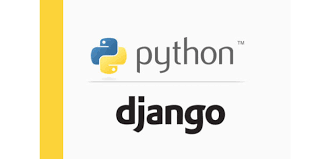Python is one of the most widely-used programming languages today due to its simplicity and versatility. It’s used for web development, data analysis, machine learning, and more, making it a top choice for companies like Accenture. If you're preparing for a Python Developer interview at Accenture, this blog covers the most commonly asked Python interview questions and answers to help you succeed.
1. What is Python? What are its key features?
Python is a high-level, interpreted, and general-purpose programming language. Key features include:
- Simple and easy-to-learn syntax.
- Supports multiple programming paradigms (procedural, object-oriented, functional).
- Extensive standard library.
- Interpreted and dynamically typed.
- Platform-independent.
2. What is PEP 8, and why is it important?
PEP 8 is Python's style guide, which defines coding conventions for writing readable Python code. It ensures code consistency and helps maintain best practices across the Python community.
3. Explain the difference between lists and tuples in Python.
- Lists: Mutable (modifiable), can be resized, and allow different data types.
- Tuples: Immutable (cannot be modified after creation), more memory-efficient, and used for read-only data.
4. How is memory managed in Python?
Python uses an automatic memory management system involving reference counting and garbage collection. Objects that are no longer referenced are automatically cleaned up by the garbage collector.
5. What are Python decorators, and how do you use them?
Decorators in Python are functions that modify the behavior of other functions or methods. They are often used to add functionality like logging, access control, or caching.
def my_decorator(func):
def wrapper():
print("Something before the function runs")
func()
print("Something after the function runs")
return wrapper
@my_decorator
def say_hello():
print("Hello!")
say_hello()
6. What is a lambda function in Python?
A lambda function is a small, anonymous function defined using the lambda keyword. It can have any number of arguments but only one expression.
# Example
add = lambda x, y: x + y
print(add(2, 3)) # Output: 5
7. What are Python's built-in data types?
Common built-in data types include:
- Numeric:
int,float,complex - Sequence:
list,tuple,range - Text:
str - Mapping:
dict - Set:
set,frozenset - Boolean:
bool - Binary:
bytes,bytearray,memoryview
8. Explain Python's exception handling mechanism.
Exception handling in Python is managed using try, except, else, and finally blocks. You can catch specific exceptions and handle them gracefully.
try:
x = 1 / 0
except ZeroDivisionError:
print("Cannot divide by zero")
finally:
print("This block always runs")
9. What are *args and kwargs in Python?
*args: Allows a function to accept an arbitrary number of positional arguments.**kwargs: Allows a function to accept an arbitrary number of keyword arguments.
def example(*args, **kwargs):
print(args)
print(kwargs)
example(1, 2, 3, name="John", age=25)
10. What is the difference between deepcopy and shallow copy?
- Shallow Copy: Creates a new object, but references the original nested objects (changes in nested objects will affect the copy).
- Deep Copy: Creates a new object and recursively copies all nested objects (changes in nested objects do not affect the copy).
11. How does Python manage function arguments?
Python uses pass-by-object-reference (or pass-by-assignment). Mutable objects (e.g., lists, dicts) can be modified within the function, while immutable objects (e.g., ints, tuples) cannot be modified in place.
12. What is the Global Interpreter Lock (GIL) in Python?
The GIL is a mutex that protects access to Python objects, preventing multiple threads from executing Python bytecodes simultaneously. This can affect multi-threaded applications in CPython.
13. What is list comprehension, and how is it used?
List comprehension provides a concise way to create lists based on existing lists. It allows for cleaner and more efficient code.
# Example
squares = [x**2 for x in range(10)]
print(squares) # Output: [0, 1, 4, 9, 16, 25, 36, 49, 64, 81]
14. What is a generator in Python?
A generator is a function that returns an iterator and produces values one at a time using the yield keyword. Generators are memory-efficient and used for large data streams.
def my_gen():
for i in range(5):
yield i
gen = my_gen()
print(next(gen)) # Output: 0
15. What is a Python module, and how is it different from a package?
- Module: A Python file containing definitions and statements, which can be imported.
- Package: A collection of related modules organized in directories, often with an
__init__.pyfile.
16. How do you create and handle virtual environments in Python?
Virtual environments are isolated Python environments where you can install packages without affecting the global environment.
# Create a virtual environment
python -m venv myenv
# Activate the virtual environment
source myenv/bin/activate # On Unix
myenv\Scripts\activate # On Windows
17. What is the difference between is and == in Python?
is: Compares object identity (whether two objects are the same instance).==: Compares object values (whether two objects have the same value).
18. How can you handle memory management in Python?
Python uses automatic memory management with reference counting and a garbage collector to free memory when objects are no longer referenced.
19. What are Python's commonly used built-in libraries?
Some commonly used libraries include:
- os: Operating system interactions.
- sys: System-specific parameters and functions.
- math: Mathematical functions.
- datetime: Date and time manipulation.
- re: Regular expressions.
20. What is multithreading in Python, and how does it work?
Multithreading in Python allows concurrent execution of multiple threads. However, due to the GIL, Python threads are not truly parallel for CPU-bound tasks. Use the threading module for I/O-bound tasks.
21. How does Python implement inheritance?
Python supports single, multiple, and multilevel inheritance using classes. A child class can inherit attributes and methods from a parent class.
class Parent:
def speak(self):
print("Parent speaks")
class Child(Parent):
pass
c = Child()
c.speak() # Output: Parent speaks
22. What are self and __init__ in Python?
self: Refers to the instance of the class and is used to access attributes and methods.__init__: The constructor method used to initialize an instance of the class.
23. What is the purpose of with statements in Python?
The with statement simplifies exception handling by automatically managing resources like file streams. It ensures that resources are properly cleaned up after use.
with open('file.txt', 'r') as file:
content = file.read()
24. What are Python's @classmethod and @staticmethod?
@classmethod: Defines a method bound to the class, not the instance. It can modify class state that applies across all instances.@staticmethod: Defines a method that doesn't require access to the instance or class. It behaves like a regular function.
25. What is the difference between Python 2 and Python 3?
Some key differences include:
- Print statements:
printis a function in Python 3. - Integer division:
1/2returns0.5in Python 3 and0in Python 2 (use//for floor division). - Unicode: Python 3 uses Unicode for strings by default.
26. How do you create a class in Python?
You can create a class in Python using the class keyword followed by the class name and a colon.
class MyClass:
def my_method(self):
print("Hello, World!")
27. Explain the concept of a context manager in Python.
A context manager is a construct that defines a runtime context for the execution of a block of code, managing the setup and teardown processes automatically, often used with the with statement.
28. What is the purpose of the pass statement in Python?
The pass statement is a null operation; it serves as a placeholder in loops, functions, or classes, where syntactically some code is required but you do not want to execute any code.
29. How can you create a new list from an existing one in Python?
You can create a new list using slicing, the list() constructor, or list comprehension.
original_list = [1, 2, 3]
new_list = original_list[:] # Slicing
30. What is the use of the import statement in Python?
The import statement is used to bring modules or specific functions/classes from modules into your current namespace, allowing you to use their functionalities in your code.
import math
print(math.sqrt(16)) # Output: 4.0
Conclusion
These top 30 Python interview questions and answers are designed to help you prepare for your technical interview at Accenture. Make sure to review these concepts, practice coding exercises, and understand the intricacies of Python to stand out in your interview.
Good luck!








Add a comment: